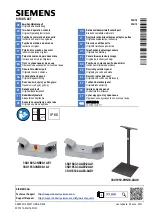
7
AUDIO SPECIFICATIONS
Parameter
Value
Maximum Gain
14 dB (@ 1 KHz)
Maximum Input Voltage
> 5 Vpp (@ 1 KHz)
Typical Gain Reduction (Volume Off)
> -70 dB (@ 1 KHz, Unity Gain)
Current Consumption
~50 mA (9 V DC Input)
Input Impedance
1 M
Ω
Output Impedance
~200 M
Ω
FEATURES
1. 9V POWER JACK
You can power your VPM-1with a typical 9V DC pedal power supply (“wall wart”). It must be rated for
at least 100mA, with center-negative polarity. To avoid power supply noise and ground loop hum, it
is possible to connect a battery to the VPM-1 by using a “barrel-to-9V-battery-snap” adapter. Just make
sure that the adapter is wired correctly with the positive terminal of the battery connected to the outside
of the barrel jack. The actual current draw of the VPM-1 is around 50mA, so a battery probably won’t
last too long if it is left plugged in, but it is a good way to troubleshoot noise issues.
2. INPUT JACK
The input jack of the VPM-1 accepts a normal 1/4” instrument cable. It can also accept a TRS cable
or stereo cable for stereo use (see “STEREO UPGRADE” on page 10). The input impedance of the
VPM-1 (in either mono or stereo) is 1 mega-ohm.
3. OUTPUT JACK
The VPM-1’s output jack can accept either a mono instrument cable or a stereo TRS cable (see “STEREO
UPGRADE” on page 10). The VPM-1’s output impedance is ~200 mega-ohms, so it should not have
any trouble driving long cable lengths or other heavy loads.
Содержание VPM-1
Страница 1: ......
Страница 6: ...6 Figure 2 VPM 1 Chassis Front Figure 3 VPM 1 DIP Switch Locations...
Страница 28: ......








































